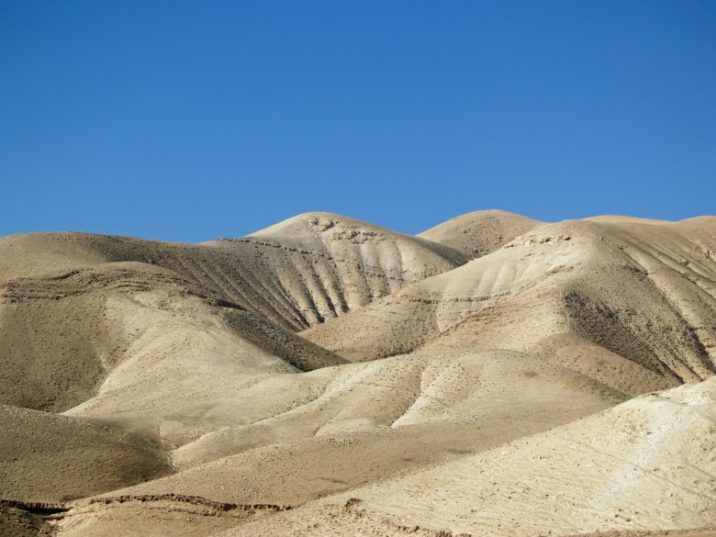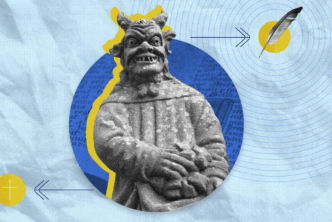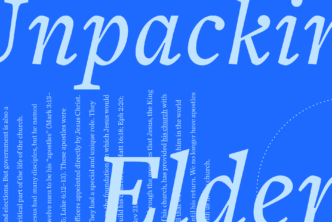An announcement by the Israel Antiquities Authority (IAA) on March 16, 2021 highlighted the discovery of fragments of biblical “Dead Sea Scrolls.” What have been found and what potential contribution do they make to our knowledge of the transmission, translation, and revision of the biblical texts in antiquity?
The discovery was the result of an organizational plan to scour the caves of the Judaean Desert for artifacts, including scrolls, before they are ransacked by looters. The rescue operation, begun in 2017, is supported by the Ministry of Jerusalem Affairs and Heritage, and is the joint effort of the IAA and the staff officer of the Archaeology Department of the Civil Administration in Judea and Samaria.
Nahal Hever Scrolls
Headlines labeled the fragments as “Dead Sea Scrolls,” and this is correct in the sense that scholars sometimes use the well-known, symbolic designation to describe all the scrolls, and not necessarily related to the site of Khirbet Qumran, which were found in the Judaean Desert and in the caves on the western shores of the Dead Sea. In this case, the discovery was made at a locality south of Qumran, designated as the “Cave of Horror,” perched hundreds of meters high above and in the southern end of the dry river bed called Nahal Hever. It can be reached by ladders or by abseiling down eighty meters from the edge of the canyon. In antiquity, it is likely that the cave would have been easier to access than it is presently, since the natural landscape has since eroded.
The cave was one of a group of ten caves previously excavated in 1953 and 1955 by Yohanan Aharoni as part of his archaeological survey of the area, and again by Yigael Yadin five years later. These caves yielded numerous skeletons, coins, pottery, administrative letters, biblical scrolls and other artefacts associated with the second Jewish uprising against Rome, known as the Bar Kokhbah revolt (132–135 CE). The “Cave of Horror” was so called because of the numerous human skeletons, including those of women, children, and infants, found in the recesses. But the cave had been used before that time, in the Chalcolithic period, according to Aharoni.
It is not surprising to learn, then, that in addition to the scroll-fragments, the remains of a child of between six and nine years old was found, dating to 4000 BCE. Its mummification is notable as evidence of the embalming and preservation of the dead, earlier by more than a thousand years before the Egyptian practice. In addition, the recent announcement highlighted the discovery of a virtually intact, woven basket—evidently the oldest of its kind—with a 90–100 litres capacity, and dating to 8,500 BCE.
Divine Name in Palaeo-Hebrew Script
Arguably, the greatest interest lies in the fragments of the biblical scrolls. According to the press reports, they attest to Zechariah 8:16–17 and Nahum 1:5–6, and it may be surmised from the description that they are fragments that belong to a previously discovered scroll with the sigla, 8HevXIIgr, the minor prophet scroll from cave 8 of Nahal Hever. The words of this scroll are written in Greek, except for the single divine name of Yhwh, conventionally referred to as the Tetragrammaton (“four letters”), which was written in the Hebrew language and in a script that was considered archaic by the time of the second Jewish revolt.
The “palaeo-Hebrew” was the script that Israelites and Canaanites used to record documents and write what later became the biblical texts. It is the script that scribes used to etch numerous inscriptions and to copy the Samaritan Pentateuch. In the late Second Temple period, the script was revived for different purposes when the common practice was to copy with the square script, derived from the conventions of representing Aramaic.
Some Qumran scribes used the palaeo-Hebrew script to copy biblical scrolls (e.g., 4QpaleoExodm; 11QpaleoLeva). Others penned only the divine names of El (e.g., 4Q268) and Yhwh (e.g., 1QpHab; 11Q5) in that script, leaving the rest of the scroll in the square script. It would be wrong to deduce one explanation for all these uses, but one reason that seems undeniable is the archaizing function to draw attention to a particular divine name or scroll being copied. For instance, one of the two scribes who copied Pesher Habakkuk represented the Tetragrammaton in palaeo-Hebrew script and used the square script for the rest of the sectarian interpretation of the prophecy of Habakkuk, including other divine names. He also scrupulously avoided using Yhwh when the biblical quotation that he copied included it, substituting a different divine name, El, in his own comments. Distinctive to 8HevXIIgr is the use of this convention to represent the Tetragrammaton in a Greek text.
Revision of the Greek Text towards the Proto-MT
The fragments of the newly discovered passages of Zechariah and Nahum belong to a scroll that represents a revised edition of the Greek translation, known as the kaige or proto-Theodotion recension, and not the Septuagint as such. It is not a new rendering but a revision of the Greek translation of the minor prophets towards the standard Hebrew text-type. By the time of the second Jewish revolt, the proto-Masoretic Text had become not just the dominant but also the standard text-type of the canon of the Hebrew Bible. The existing Greek translation was revised in order to make it agree more closely not just with the sense of the Hebrew, but its very wording. This recension was literalistic and characteristically rendered the Hebrew gam (גם) by the stereotype Greek translation kaige (καί γε “and”).
In a published video interview, Oren Abelman, curator researcher at the IAA, gave an example of the literalistic translation of the new fragment with the Hebrew expression ’ îš ’t rē‘ēhû, meaning “one to another,” which the LXX rendered idiomatically as ekastos (“each”) whereas 8HevXIIgr literally read aner “man.” This is likely to refer to a new reading of Zech 8:16 where the LXX translated it as: ἕκαστος πρὸς τὸν πλησίον αὐτοῦ (“each to his neighbor”).
New Finds in Context
The contribution, then, constitutes the addition of more pieces of the jigsaw puzzle of a previously published scroll, 8HevXIIgr. By itself, the finds add just details. Taken as a whole, however, the scroll found at Nahal Hever attests to the emergence of the proto-MT as the standard Hebrew text. The textual fluidity of the biblical text, evidenced before 100 CE, gives way to the one text that became authoritative for Judaism and Protestantism. The Masoretic Text, as found in Codex Leningradensis, is the standard text of scholarship. The emergence of the MT also coincides with the emergence of the canon of the Hebrew Bible.
The scroll is likewise important in attesting to a literalistic tradition of interpretation and translation among Jews in the first centuries of the common era. In a ground-breaking study, Les Devanciers d’Aquila (1963), Dominique Barthélemy brilliantly showed that there was a literalistic strand of Jewish Bible interpretation and translation that preceded Aquila who, according to Jerome, was Rabbi Akiba’s student (“Akibas quem magistrum Aquilae proselti autumant”). Aquila’s Greek translation of the Hebrew was literal in the extreme and left him open to the charge of barbarism. For instance, Aquila rendered the Hebrew bǝrē’šît (בראשׁית, “in (the) beginning” as en kephalaiō (ἐν κεφαλαίω “at the head”). Barthélemy showed that Aquila was not advocating a hermeneutical principle de novo. Rather, he was following a tradition, also attested in 8HevXIIgr, which can be traced back to Rabbi Akiba ben Joseph who famously believed that mounds of halakhot or Jewish laws could be derived from each of the crowns of the letters of the Torah (b. Menah. 29b). Such a literalistic tradition helps explain the impulse to preserve not just the sense but also the very words of the law in some New Testament texts. In Matthew’s Gospel, for instance, Jesus says that not one iota (ἰῶτα ἓν) or a dot (μία κεραία) shall pass from the law until all is accomplished (5:17–19).
In short, the recent scrolls discovery from the Judaean Desert is important in our steady accumulation of data for a better understanding of the ancient world. It evidences the emergence of the proto-MT as the standard text, to which the Greek translation has been revised. It attests to a literalistic strand of interpretation that reads the biblical text not just for the sense but also its very words.
Timothy Lim is Professor of Hebrew Bible & Second Temple Judaism at the University of Edinburgh and a recognized expert on the DSS. Some of his many works are available on Logos, including:

The Oxford Handbook of the Dead Sea Scrolls

The Formation of the Jewish Canon

The Dead Sea Scrolls in their Historical Context





